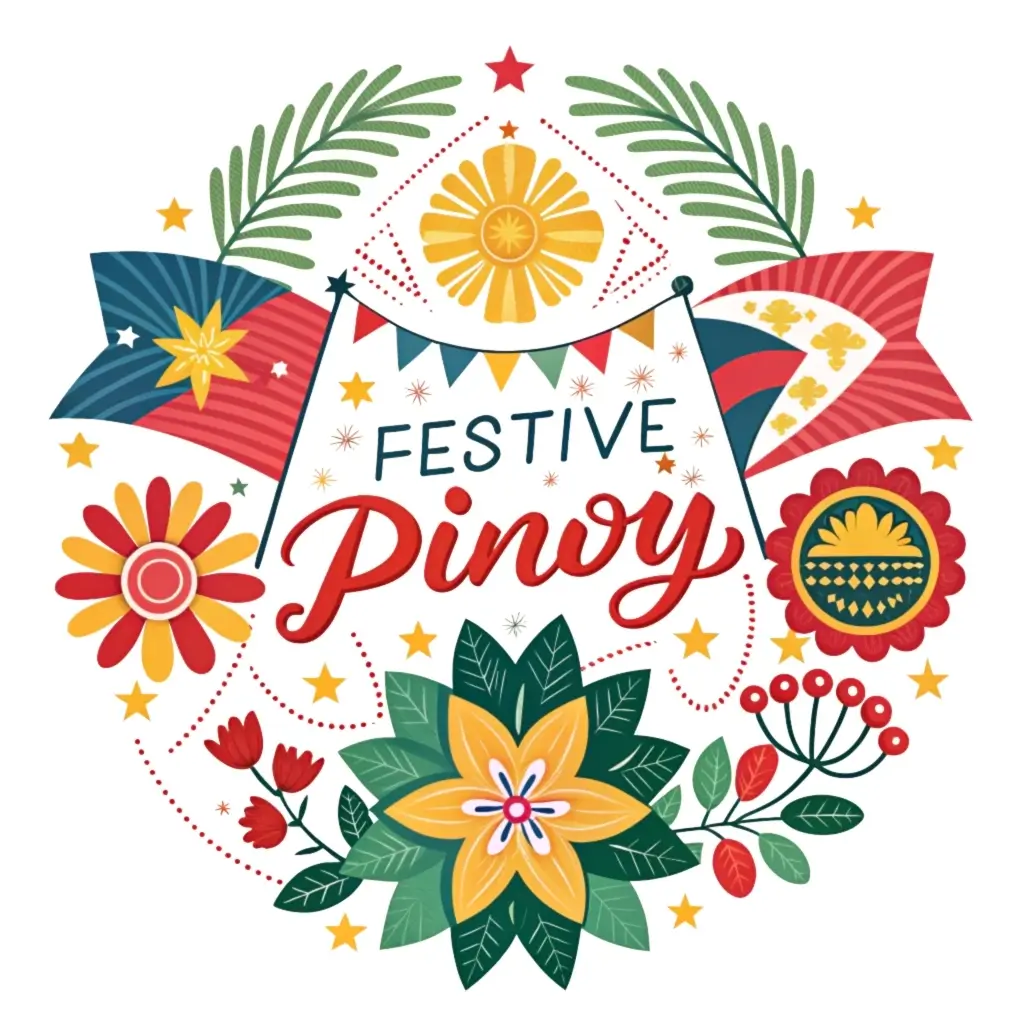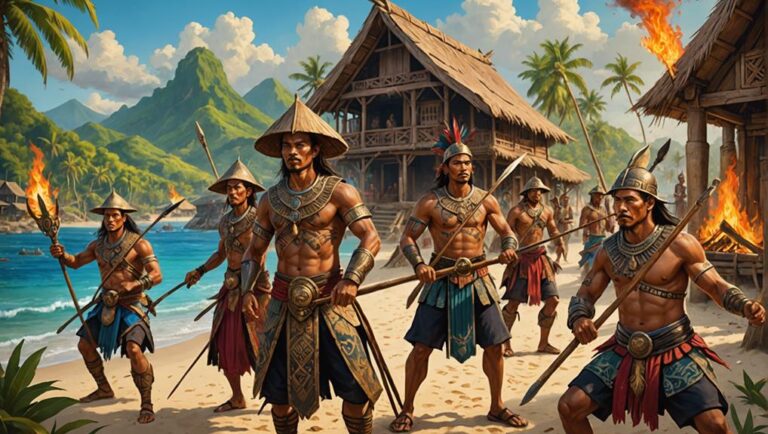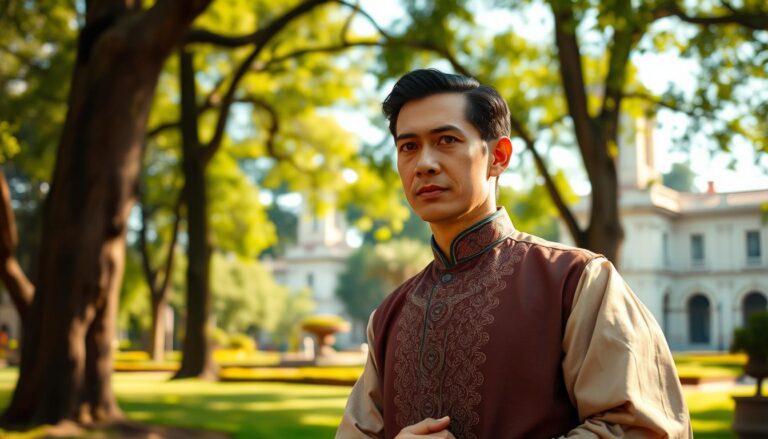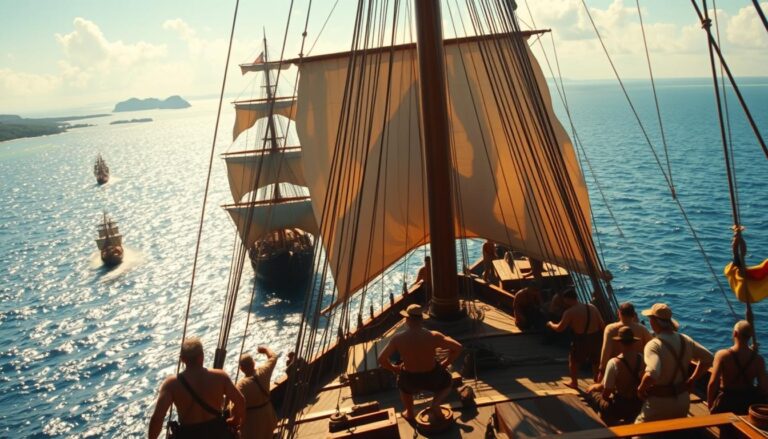Early Filipino Settlements: Exploring Early Community Life
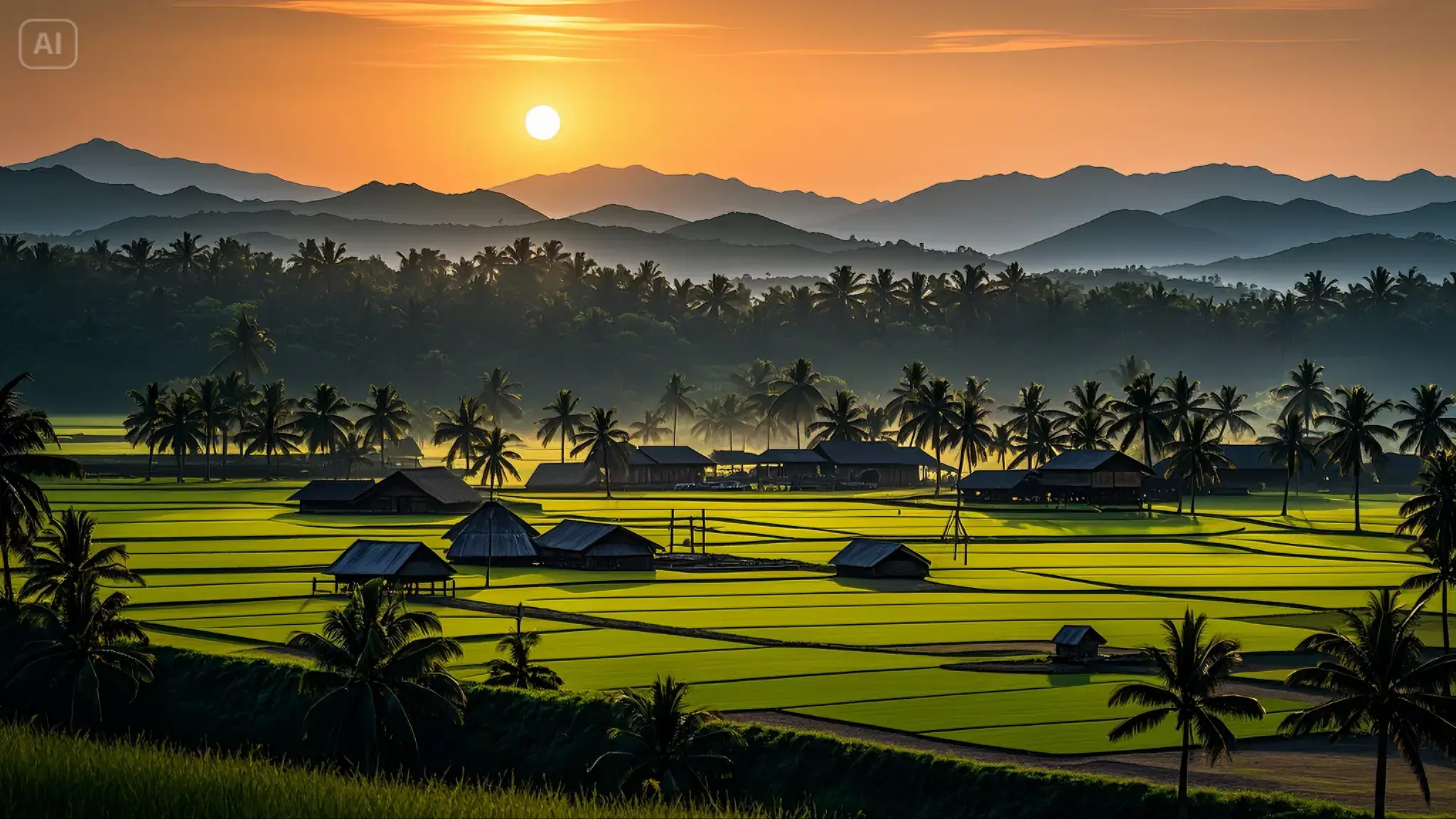
Discover the fascinating origins of the Philippines as we explore the early Filipino settlements that laid the foundation for a diverse and vibrant nation.
From the detailed village structures to the significant impact of indigenous beliefs, we will uncover the diverse array of ancient Filipino art forms and agricultural techniques that defined these early societies. Through this exploration, we will also uncover the vital role that water bodies played in the growth and prosperity of early Filipino settlements.
Let’s explore together the different influences that have made this culture so rich and lively. We’ll look at the deep traditions that continue to inspire and strengthen the diverse and fascinating Filipino way of life.
Key Takeaways
- The Barangay Was the Basic Unit of Pre-Colonial Filipino Society, With Well-Defined Social Roles
- Animism and Indigenous Rituals Played a Vital Role in Strengthening Early Filipino Communities
- Ancient Art Forms Like Tattooing and Weaving Served as Powerful Expressions of Identity and Status
- The Ingenious Engineering of Rice Terraces Demonstrated the Agricultural Prowess of Early Filipinos
- Rivers and Water Bodies Were Crucial for Trade, Sustenance, and the Growth of Early Communities
Overview Of Early Filipino Settlements
| Aspect | Description |
|---|---|
| Time Period | Pre-colonial era (before 1521) |
| Main Settlement Types | 1. Barangay 2. Sultanates (in Mindanao) 3. Coastal trading ports |
| Barangay Structure | • Smallest political unit • Led by a Datu (chieftain) • Typically 30-100 families |
| Social Classes | 1. Maginoo (nobility) 2. Timawa (freemen) 3. Alipin (dependent class) |
| Common Locations | • Coastal areas • River valleys • Fertile plains |
| Housing | • Nipa huts (bahay kubo) • Raised on stilts • Made from local materials (bamboo, cogon grass, palm leaves) |
| Economic Activities | • Agriculture (rice cultivation) • Fishing • Hunting and gathering • Artisanal crafts • Trade with neighboring settlements and foreign merchants |
| Political Organization | • Decentralized • Autonomous barangays • Alliances formed for trade and defense |
| Religious Practices | • Animism • Ancestor worship • Nature spirits (anito) • Islam (in parts of Mindanao and Sulu) |
| Notable Early Settlements | • Tondo (Luzon) • Cebu (Visayas) • Butuan (Mindanao) • Sulu Sultanate |
| Foreign Influences | • Chinese traders • Arab missionaries • Indian cultural elements |
| Writing Systems | • Baybayin (Luzon and Visayas) • Jawi (Islamic areas) |
| Technological Advancements | • Rice terracing • Metalworking • Boat building • Weaving |
Early Filipino Settlements
The earliest known human settlements in the Philippines date back to at least 67,000 years ago. Archaeological evidence suggests that the first inhabitants were the Negritos, who arrived around 67,000 to 65,000 years ago.
Key facts about early Filipino settlements:
- Barangay system: The basic political unit was the barangay, typically consisting of 30 to 100 families.
- Social structure: Society was divided into three main classes:
- Datu (nobles)
- Timawa (freemen)
- Alipin (dependent class)
- Locations: Early settlements were primarily established along coastal areas and rivers for easy access to water and trade routes.
- Agriculture: Rice cultivation began around 3200 BCE, with terracing techniques developed in the Cordilleras around 2000 years ago.
- Trade: Maritime trade with neighboring islands and as far as China was established by 1000 BCE.
- Writing system: The Baybayin script was in use by the 13th century CE.
- Religious beliefs: Animism and ancestor worship were common, with Islam introduced to the southern islands in the 14th century.
- Technology: Early Filipinos developed skills in metalworking, pottery, and weaving.
- Notable settlements:
- Tondo (Luzon)
- Cebu (Visayas)
- Butuan (Mindanao)
- Sulu Sultanate (established 1405 CE)
Foreign influence: Chinese, Indian, and Arab traders had significant cultural and economic impacts on early Filipino societies.
These early settlements laid the foundation for the diverse and complex societies that developed in the Philippine archipelago prior to Spanish colonization in the 16th century.
- Archaeological evidence suggests human activity in the Philippines as early as 709,000 years ago, with the discovery of Homo luzonensis fossils
- Pre-colonial Filipinos lived in kinship groups called barangays, led by datus (chieftains), with a three-tiered social structure
- Early Filipinos practiced shifting cultivation, hunting, and fishing, with sedentary agriculture being less common
- Islam was introduced to Mindanao and the Sulu Archipelago in the 15th century, establishing two sultanates
- The Spanish arrived in 1521, led by Ferdinand Magellan, marking the beginning of Western colonization
Tracing the Village Structure in Pre-Colonial Philippines
As you delve deeper into the roots of Filipino heritage, it’s essential to understand the pre-colonial village structure that formed the backbone of early community life. The barangay, a term that has survived to this day, was the basic unit of society in the archipelago before the arrival of foreign powers.
By examining the roles and social hierarchy within these ancient communities, you can gain valuable insights into the foundations of Filipino culture and identity.
Understanding the Barangay as a Basic Unit
The barangay served as the fundamental building block of pre-colonial Filipino society. Each barangay functioned as a self-contained unit, with its leadership, social structure, and economic activities.
The barangay was typically composed of 30 to 100 families, all working together to ensure the survival and prosperity of the community. The roles within the barangay were well-defined:
- The datu, or chieftain, who led the barangay
- The maharlika, or nobility, who assisted the datu
- The timawa, or freemen, who were not bound to servitude
- The alipin, or slaves, who worked for the datu and maharlika
Roles and Social Hierarchy Within Early Communities
The social hierarchy within the barangay was clearly defined, with each member playing a specific role in the community. At the top of the hierarchy was the datu, who held the responsibility of leading and protecting the barangay.
The datu was assisted by the maharlika, who comprised the nobility and held significant influence in decision-making. Below them were the timawa, the freemen who enjoyed certain privileges and were not bound to servitude:
| Social Class | Role in the Barangay |
|---|---|
| Datu | Chieftain and leader of the barangay |
| Maharlika | Nobility who assisted the datu |
| Timawa | Freemen not bound to servitude |
| Alipin | Slaves who worked for the datu and maharlika |
At the bottom of the social hierarchy were the alipin, or slaves, who were bound to serve the datu and maharlika. Despite the existence of slavery, it is important to note that the concept of servitude in the pre-colonial Philippines differed from the harsh and oppressive forms of slavery practiced in other parts of the world during that time.
The Influence of Indigenous Beliefs on Lifestyle
As you continue to explore the roots of Filipino heritage and early community life, it’s crucial to recognize the profound influence of indigenous beliefs on the lifestyle of pre-colonial Filipinos. Animism, the belief that all things, both living and non-living, possess a spirit or soul, played a central role in shaping the daily lives and practices of these ancient communities.
Animism and Its Impact on Daily Life
Animism, the belief that all things possess a spirit or soul, profoundly influenced the daily lives of pre-colonial Filipinos. From the way they interacted with their environment to the rituals they performed, animistic beliefs were deeply ingrained in their worldview.
You can observe the impact of animism in the reverence shown towards nature, as Filipinos believed that every tree, rock, and body of water was imbued with a spirit. This belief system fostered a deep respect for the natural world and encouraged sustainable practices in their daily activities, such as farming, fishing, and hunting.
Rituals, Festivals, and Community Bonding Events
Indigenous rituals, festivals, and community bonding events played a vital role in strengthening the ties that bound pre-colonial Filipino societies together. These gatherings served as opportunities for the community to come together, celebrate their shared beliefs, and reinforce their sense of identity and belonging.
Rituals, such as those related to planting and harvesting, were performed to appease the spirits and ensure bountiful yields. Festivals, often coinciding with important agricultural milestones, were joyous occasions filled with music, dance, and feasting:
- Rituals to appease spirits and ensure bountiful harvests
- Festivals coinciding with agricultural milestones
- Community bonding events strengthen social ties
Ancient Filipino Art Forms and Their Meanings
As you learn about Filipino culture and history, it’s important to study the old art styles. These art forms were meaningful ways that early Filipino communities showed who they were, what they believed in, and their place in society.
From the intricate tattoo traditions among warrior classes to the exquisite weaving techniques that told stories of cultural pride, these art forms offer a fascinating glimpse into the lives and values of pre-colonial Filipinos.
Tattoo Traditions Among Warrior Classes
As you delve into the world of ancient Filipino art forms, you cannot help but be captivated by the intricate tattoo traditions that adorned the bodies of warrior classes. These tattoos, known as batok or batuk, were more than mere decorations; they served as powerful symbols of bravery, strength, and social status within the community.
The art of tattooing was a sacred practice, often performed by skilled tattoo artists who used rudimentary tools to create intricate designs on the skin. The more tattoos a warrior possessed, the higher their rank and the greater their prestige within the tribe, as each tattoo told a story of their battles, victories, and accomplishments.
Weaving Techniques as Cultural Expressions
Weaving techniques in pre-colonial Philippines were more than just a means of creating functional textiles; they were a powerful expression of cultural identity and pride. As you explore the intricate patterns and designs woven into traditional fabrics, you can’t help but marvel at the skill and artistry of the weavers who created them.
Each region had its distinct weaving traditions, with designs and motifs that told stories of their people’s beliefs, values, and way of life:
- The Ilocos region’s abel iloko, known for its geometric patterns and vibrant colours
- The Cordillera’s inabel, featuring intricate designs inspired by nature and mythology
- The T’nalak of the T’boli people, with its complex patterns representing dreams and ancestral knowledge
Agricultural Practices That Shaped Early Societies
As you continue to explore the roots of Filipino heritage and early community life, it’s crucial to understand the agricultural practices that shaped these ancient societies.
By examining the engineering marvels of the rice terraces and the significance of seasonal crops, you can gain a deeper appreciation for the ingenuity and resilience of your ancestors, who skillfully harnessed the land to ensure their survival and prosperity.
Rice Terraces Engineering by Ancestors
As you marvel at the ancient rice terraces that grace the Philippine landscape, you cannot help but be awestruck by the engineering prowess of your ancestors. These impressive feats of agricultural ingenuity stand as a testament to the skill and determination of early Filipino communities, who carved these magnificent structures into the mountainsides to ensure a stable food supply for their people.
The construction of the rice terraces required an intimate understanding of the land, water management, and the intricate interplay between agriculture and the environment.
Early Filipino settlers demonstrated their mastery of these elements by creating a complex system of irrigation channels, stone retaining walls, and carefully sculpted terraces that allowed them to cultivate rice on the steep slopes of the Cordillera region:
| Rice Terrace Region | Key Features |
|---|---|
| Ifugao Rice Terraces | UNESCO World Heritage Site, carved into the Cordillera mountains |
| Banaue Rice Terraces | Nicknamed “Eighth Wonder of the World,” showcasing advanced irrigation systems |
| Hungduan Rice Terraces | Unique spider web-like pattern, demonstrating precise engineering |
Seasonal Crops and Their Significance to Survival
As you delve into the agricultural practices that sustained early Filipino societies, the significance of seasonal crops cannot be overlooked. These crops, carefully selected and cultivated based on the rhythms of the land and the changing seasons, played a vital role in ensuring the survival and well-being of your ancestors.
From the hardy root crops that thrived in the dry season to the bountiful fruit harvests that coincided with the monsoon rains, each seasonal crop held a special place in the agricultural tapestry of the pre-colonial Philippines.
By understanding the wisdom and foresight of your forebears in harnessing the power of seasonal crops, you gain a deeper appreciation for the resilience and ingenuity that shaped the very foundations of Filipino culture and identity.
The Role of Water Bodies in Community Development
As you journey through the rich tapestry of Filipino heritage, the vital role of water bodies in the development of early communities becomes increasingly apparent. From the life-giving rivers that sustained agriculture and provided a means of transportation to the vast seas that facilitated trade and cultural exchange, these aquatic arteries were the lifeblood of pre-colonial societies.
Navigating Rivers for Trade and Sustenance
As you explore the role of rivers in the development of early Filipino communities, you will discover how these vital waterways served as the lifeblood of trade and sustenance. Your ancestors skillfully navigated these rivers, using them as natural highways to transport goods, facilitate commerce, and connect with neighbouring settlements.
The rivers also provided a bountiful source of food, with fishing and aquaculture playing a crucial role in the daily lives of early Filipinos.
Interesting Facts About Early Filipino Settlements
- 🏝️ The Tabon Caves in Palawan housed some of the earliest known human settlements in the Philippines, with artifacts dating back to 47,000 years ago.
- 🌾 Early Filipinos developed a complex rice terracing system in the Cordilleras as early as 2,000 years ago, which is still in use today.
- 🏘️ The Badjao people, known as “sea nomads,” have lived on boats and in stilt houses over water for centuries, rarely setting foot on land.
- 🗣️ Pre-colonial Philippines had its writing system called Baybayin, which was used across many of the islands.
- 🌋 The eruption of Mount Pinatubo in 1991 revealed ancient settlements that had been buried for centuries, providing new insights into early Filipino life.
- 🐘 Fossil evidence suggests that prehistoric elephants once roamed the Philippines, and early settlers may have encountered them.
- 🏺 The Manunggul Jar, a secondary burial jar from Palawan dating back to 890-710 BCE, shows early Filipinos’ belief in the afterlife.
- 🛶 Early Filipinos were skilled seafarers, using outrigger boats called balangay to trade with neighboring islands and as far as China.
- 👑 The Laguna Copperplate Inscription, dated 900 CE, is the earliest known written document found in the Philippines, mentioning a settlement called “Tondo.”
- 🌿 Early Filipino settlements often had a designated area called “babaylan,” where female shamans practiced traditional healing and spiritual rituals.
Conclusion
Exploring the roots of Filipino heritage and early community life is crucial to understanding the foundations of Filipino culture and identity. The pre-colonial barangay structure, with its well-defined roles and social hierarchy, formed the backbone of early societies.
Indigenous beliefs, such as animism, profoundly influenced the daily lives, rituals, and festivals of pre-colonial Filipinos, strengthening community bonds.
Ancient art forms, agricultural practices, and the role of water bodies in trade and sustenance showcase the ingenuity and resilience of Filipino ancestors in shaping their communities and ensuring their survival and prosperity.
